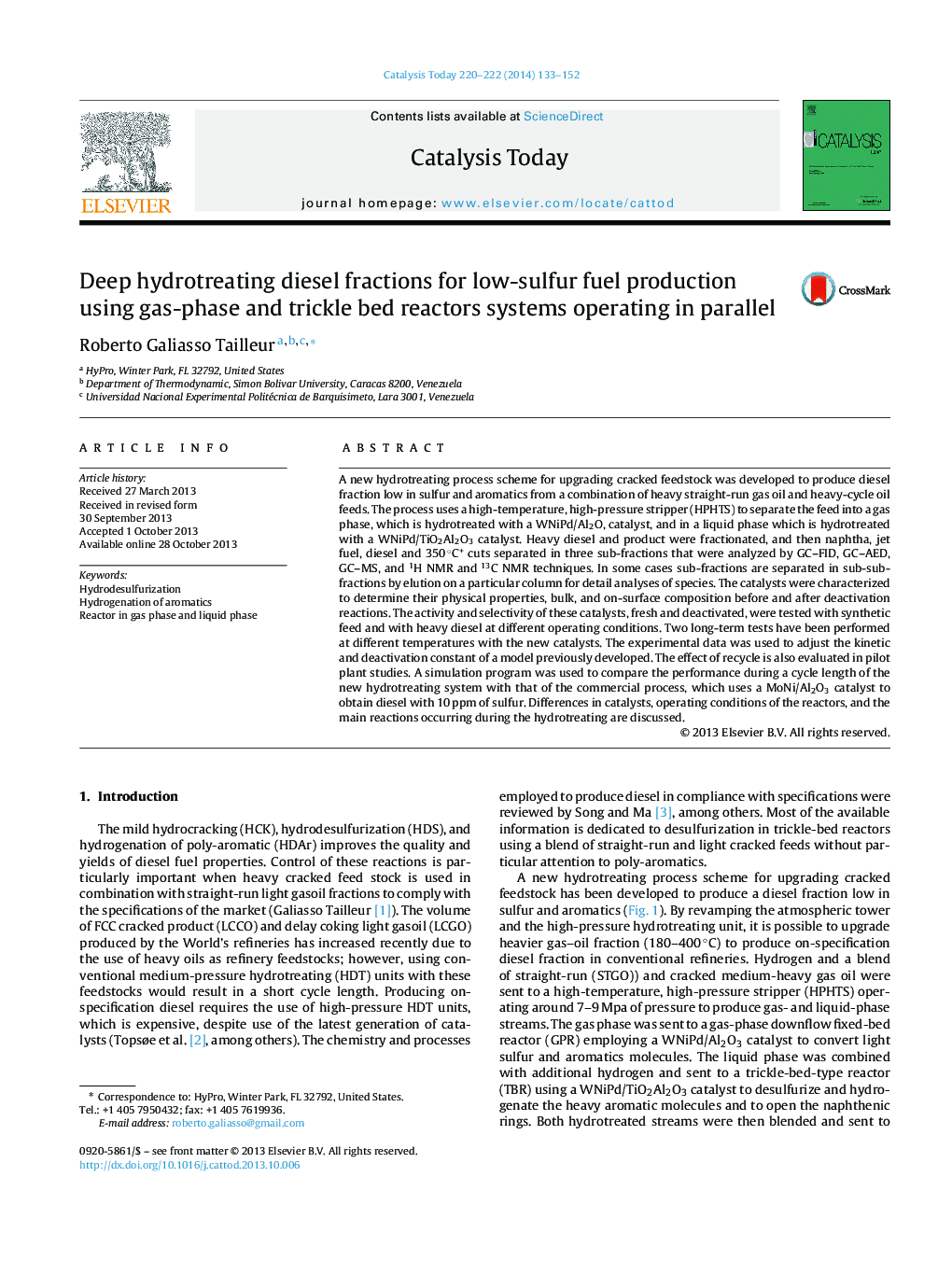| کد مقاله | کد نشریه | سال انتشار | مقاله انگلیسی | نسخه تمام متن |
|---|---|---|---|---|
| 54397 | 47008 | 2014 | 20 صفحه PDF | دانلود رایگان |
• Mild hydrocracking, dearomatization and desulfurization of heavy diesel.
• Use of a gas phase and trickle bed reactors to produce low sulfur diesel.
• WNi Pd/Al and WNiPd/TiAl catalyst produce higher cetane number than MoNi/Al.
• Higher yields, product quality and benefits than current HDT operation.
A new hydrotreating process scheme for upgrading cracked feedstock was developed to produce diesel fraction low in sulfur and aromatics from a combination of heavy straight-run gas oil and heavy-cycle oil feeds. The process uses a high-temperature, high-pressure stripper (HPHTS) to separate the feed into a gas phase, which is hydrotreated with a WNiPd/Al2O, catalyst, and in a liquid phase which is hydrotreated with a WNiPd/TiO2Al2O3 catalyst. Heavy diesel and product were fractionated, and then naphtha, jet fuel, diesel and 350 °C+ cuts separated in three sub-fractions that were analyzed by GC–FID, GC–AED, GC–MS, and 1H NMR and 13C NMR techniques. In some cases sub-fractions are separated in sub-sub-fractions by elution on a particular column for detail analyses of species. The catalysts were characterized to determine their physical properties, bulk, and on-surface composition before and after deactivation reactions. The activity and selectivity of these catalysts, fresh and deactivated, were tested with synthetic feed and with heavy diesel at different operating conditions. Two long-term tests have been performed at different temperatures with the new catalysts. The experimental data was used to adjust the kinetic and deactivation constant of a model previously developed. The effect of recycle is also evaluated in pilot plant studies. A simulation program was used to compare the performance during a cycle length of the new hydrotreating system with that of the commercial process, which uses a MoNi/Al2O3 catalyst to obtain diesel with 10 ppm of sulfur. Differences in catalysts, operating conditions of the reactors, and the main reactions occurring during the hydrotreating are discussed.
Figure optionsDownload high-quality image (104 K)Download as PowerPoint slide
Journal: Catalysis Today - Volumes 220–222, March 2014, Pages 133–152
